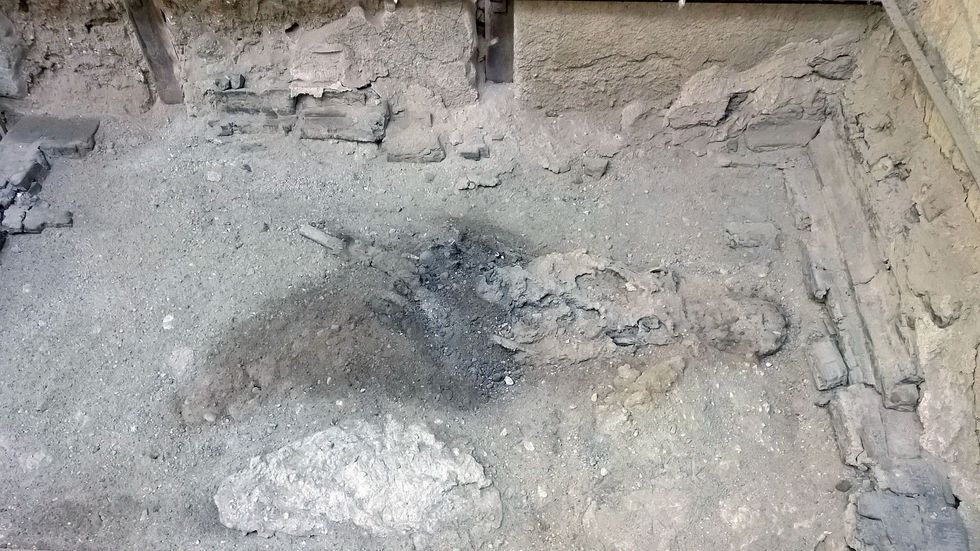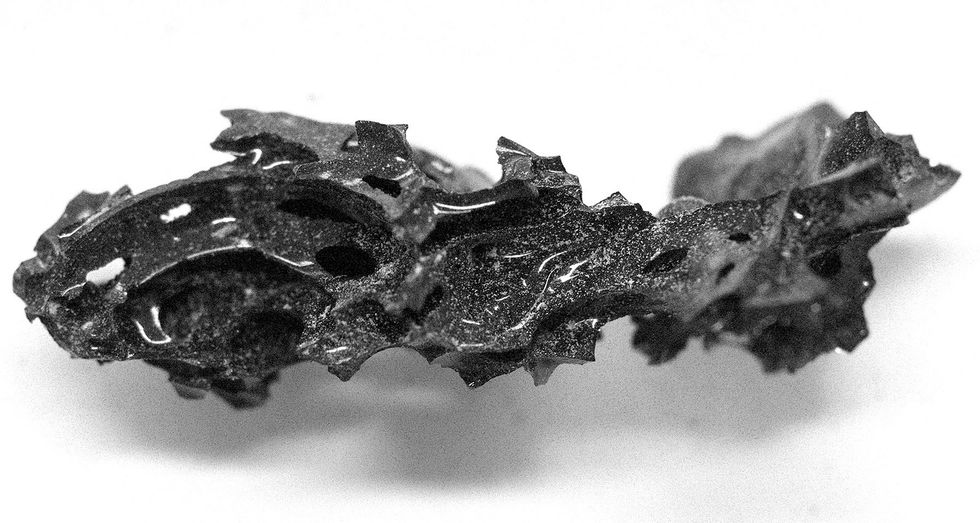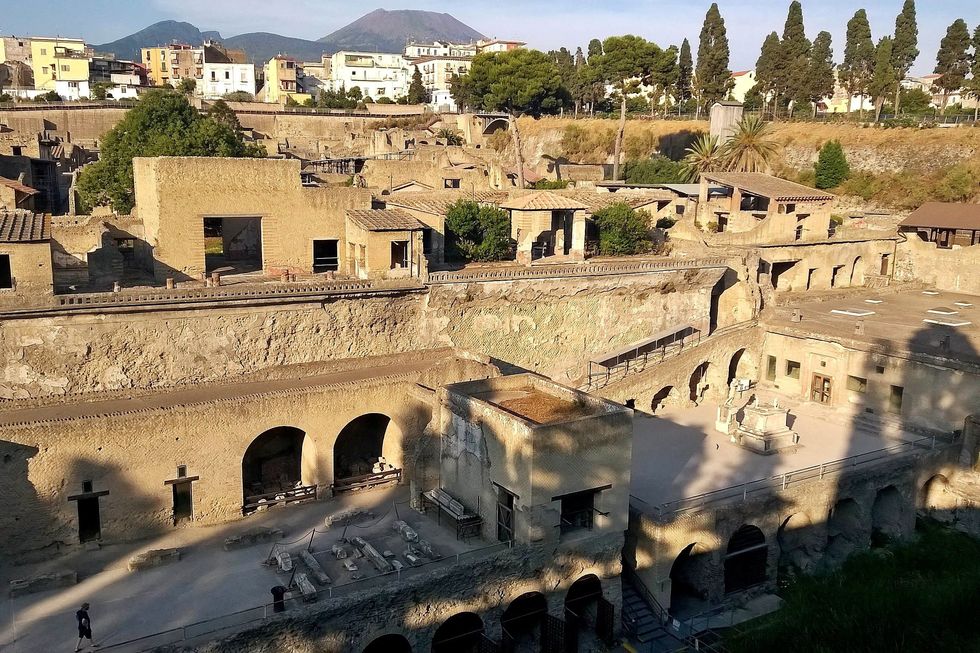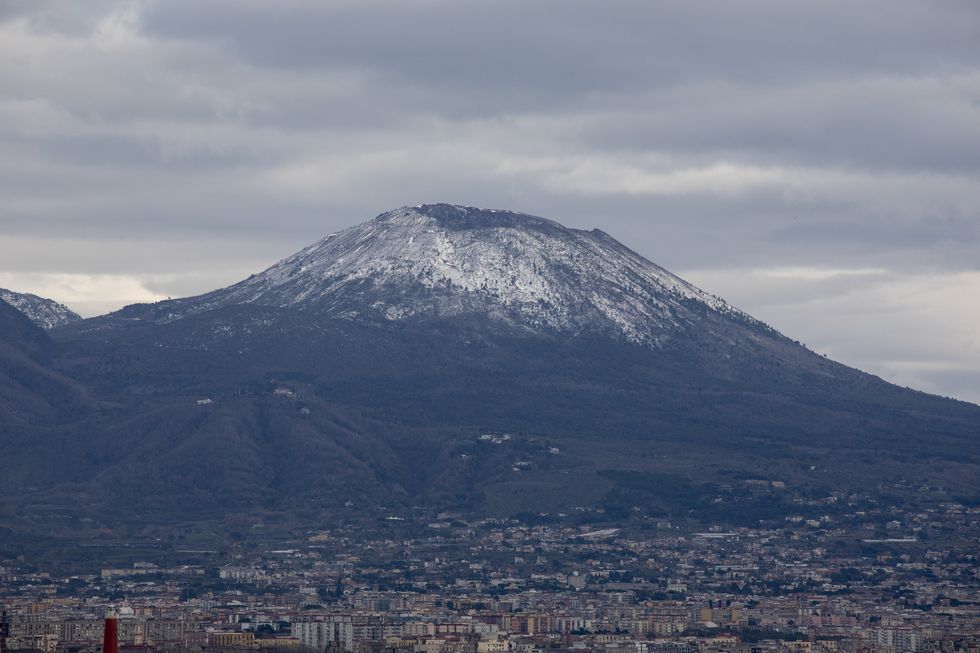The victim under the microscope was killed nearly 2,000 years ago when the volcano erupted
Don't Miss
Most Read
Trending on GB News
Scientists have discovered that Mount Vesuvius's eruption turned victims' brains into glass in a major historical breakthrough.
Researchers from Roma Tre University in Italy have analysed fragments of glass found inside a skull from Herculaneum.
The victim was killed nearly 2,000 years ago when the volcano erupted.
Archaeologists determined that a super-heated ash cloud reaching 510C caused this unprecedented preservation phenomenon.

The remains of a deceased man killed in the eruption of Mount Vesuvius in 79 AD lies in the remains of a bed in the Collegium Augustalium at the archaeological site of Herculaneum
REUTERS
This is the first time such a process has been documented in human tissue.
A dark-coloured organic glass was found inside the skull of an individual who died in Herculaneum.
The victim appears to have been lying in bed when they were killed by the volcanic eruption.
Researchers used X-rays and electron microscopy to analyse the glass fragments found in the skull and spinal cord.
The fossilised brain provides crucial insight into the horrifying final moments when Mount Vesuvius erupted.
LATEST DEVELOPMENTS:
A fragment of organic-forming glass discovered in the man's brain
REUTERS
The analysis revealed that for brain tissue to transform into glass, it must have been heated to at least 510C before cooling rapidly.
Extreme temperatures exceeded what would have occurred from pyroclastic flows alone, which reached no higher than 465C.
The bones of the skull and spine likely protected the brain from complete thermal breakdown.
This protection allowed fragments to form the unique organic glass that researchers discovered.
The researchers noted in the journal Scientific Reports: "This is a process of preservation never previously documented for human or animal tissue, neither brain nor any other kind."

General view of the archaeological site of Herculaneum with Mount Vesuvius visible in the background
REUTERS
While human brain preservation occasionally occurs in archaeological findings, this vitrification process is entirely unique.
The eruption killed thousands, but this is the first evidence of fossilised brain being discovered.
Scientists described it as "compelling evidence" of human brain remains transformed into organic glass.
The researchers concluded that a super-heated ash cloud which dissipated quickly was the first deadly event during Vesuvius's eruption.
This burning hot cloud would have left an ash deposit of just a few centimetres on the ground.
The bodies were "left virtually in open air" after this initial event.
Later, Herculaneum was progressively buried by thicker pyroclastic flow deposits at lower temperatures.

Mount Vesuvius
GETTY
This sequence of events allowed the unique vitrified brain to be preserved until today.
The eruption's aftermath has been preserved in incredible detail due to ash and pumice hardening over time.
This has allowed archaeologists to study the final moments of victims in Herculaneum and Pompeii.
More than 2,000 bodies have been unearthed from the area.
Some victims were found curled in foetal positions or attempting to escape their homes.
Last month, archaeologists discovered a luxurious private bathhouse in Pompeii, described as a "once in a century discovery".









